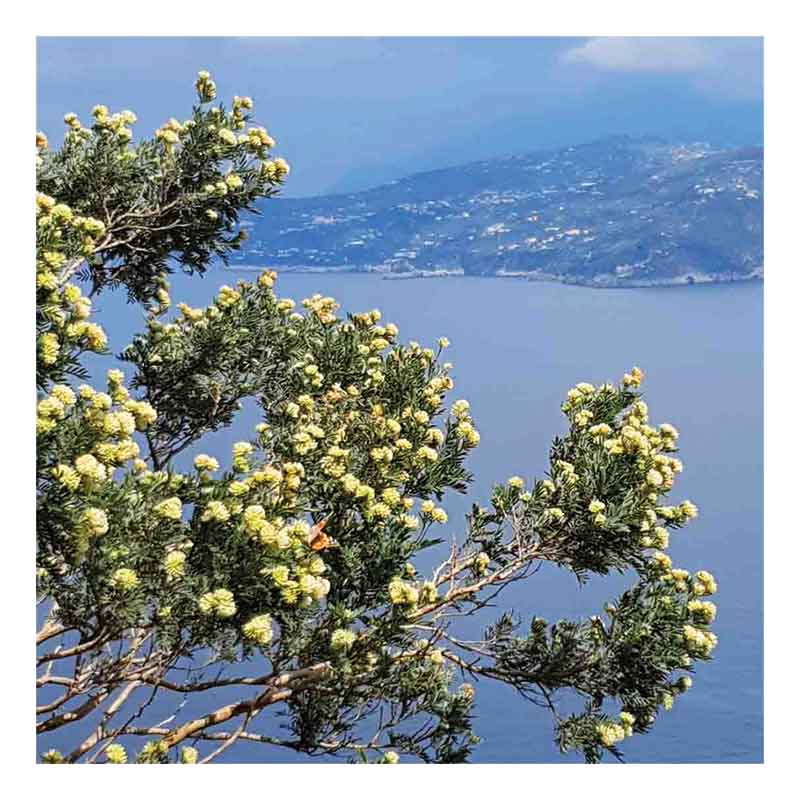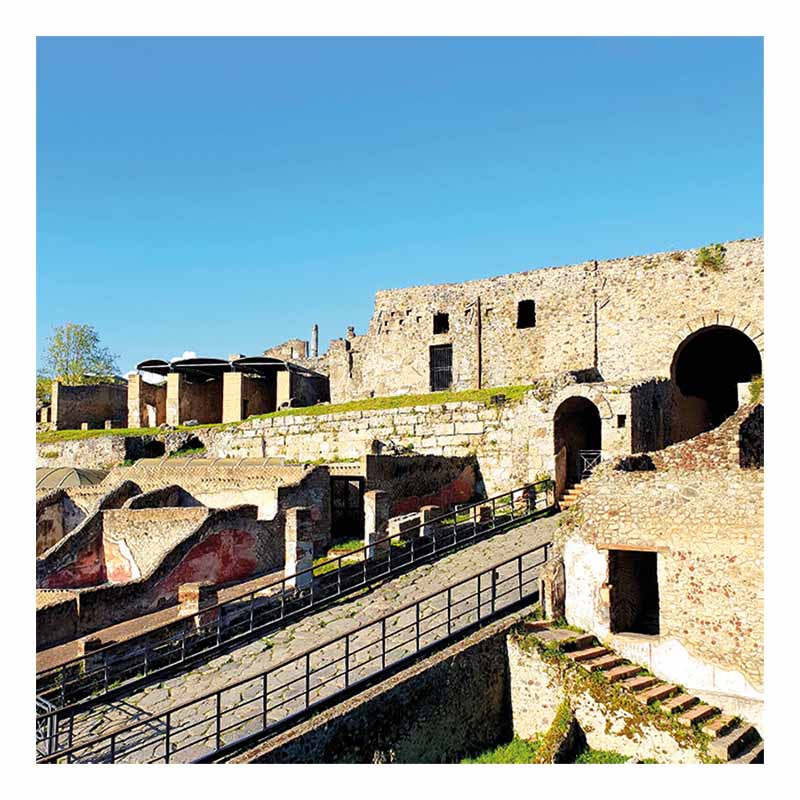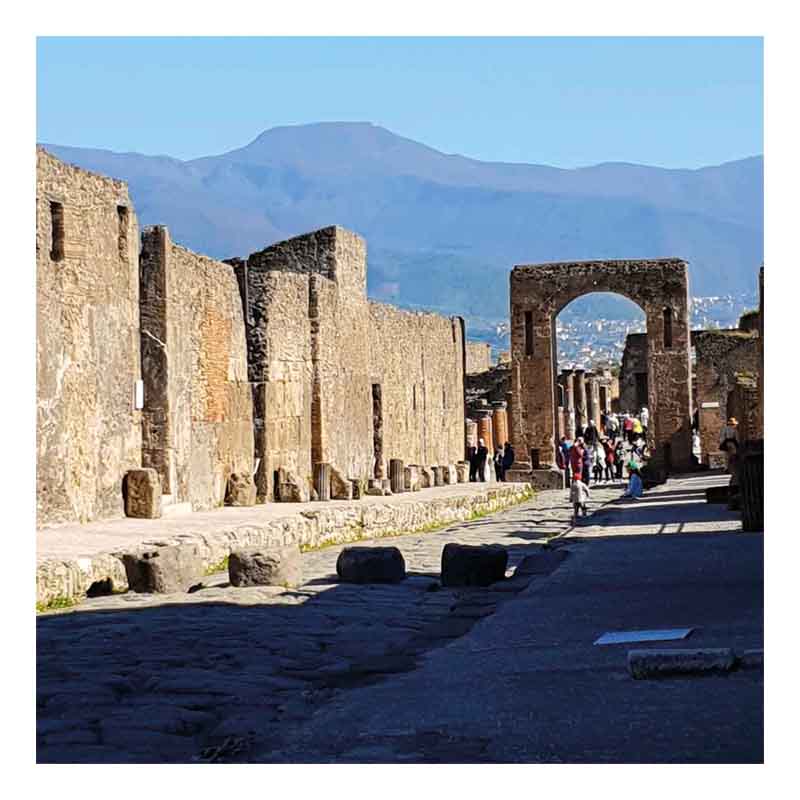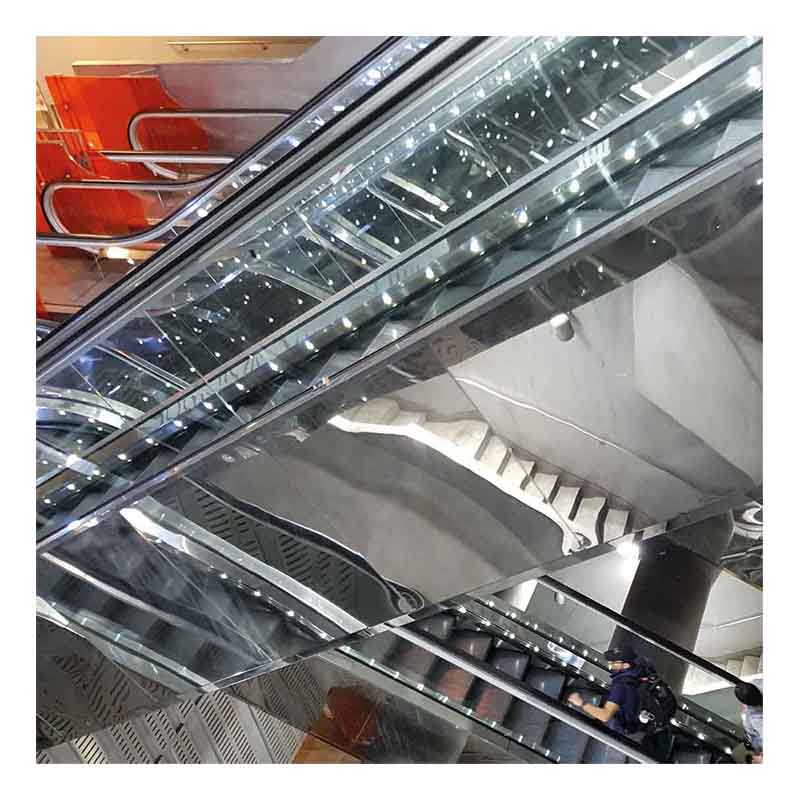Tag 7 – Pompeji
Friday, 21st April
Hello,
yesterday we had a tight program. Since we wanted to cross to Sorrento first, my breakfast was less sumptuous than usual.
Matthias encouraged me to eat more. I remained sceptical. I know that a boat has several ways of rocking: If it rotates about the longitudinal axis, the movement is called rolling. If it swings around the transverse axis, it is called pitching. The movement around the axis towards the core of the earth is called yawing. From private long-term studies I know that all three make me nauseous and that it doesn't get any better if you combine the swing axes.
On the way back, the ship pitched happily, but so moderately that my stomach mentally followed. The expression mare calmo is far less memorable than mare mosso. Mare calmo is a mere word with no tangible result.
We did not see much of Sorrento, although the guide recommends the Valley of the Mills and the view. Should I ever need a one-size-fits-all straw hat, an undersized handbag, or a colourful scarf, Sorrento is my first port of call. Shops line the streets from the port to the train station. Strung like pearls.
We got on the train towards Naples and drove to Pompeii. I noticed that Vesuvius completely wiped out the city a long time ago. Ms. Auer, my Latin teacher, explained this in detail. She said Pompeii was dug up again. People died in the middle of an everyday movement and you could see all of that.
Even then, the thought made me sad – a spirit of research or not. Do people really have to be on display? I photographed the streets instead.
There were sidewalks, zebra crossings, and deep ruts.
Matthias showed me a part of the city that had not yet been excavated: behind the facade there was a colorfully overgrown mound of earth.
I had only subconsciously noticed the change in the cityscape. The only thing I was happy about was that the grass and poppies bring a little more contrast to the pictures. It was only then that I realized that the colourful flora was due to the fact that there was still a lot to do here.
It was time to leave. Back to the train station, collect your luggage and continue to Naples.
Let's see how it is there.
Johann Wolfgang von Goethe said: "See Naples and die."
My aunt: "Naples? No way!"
Unlike Goethe, my aunt knew Italian. The Goethe quote is translated imprecisely. It omits the pun.
"Vedi Napoli e poi muori" could also mean: "First look at Naples and then Muori."
What actually was supposed to be a promotional offensive by the Muori City Marketing Association, Goethe boycotted.
To see for myself I have to go to Muori.
Where is that actually located?
Kind regards
Pinky






